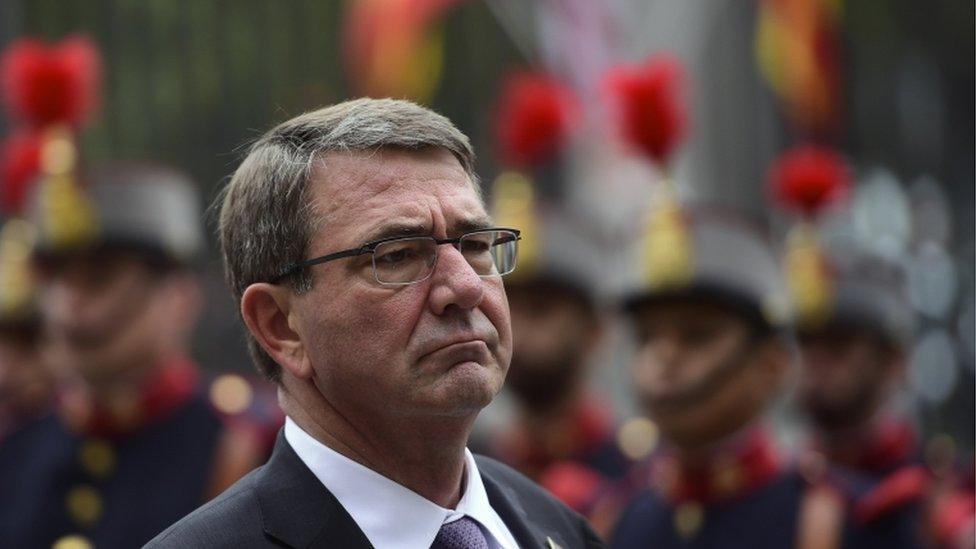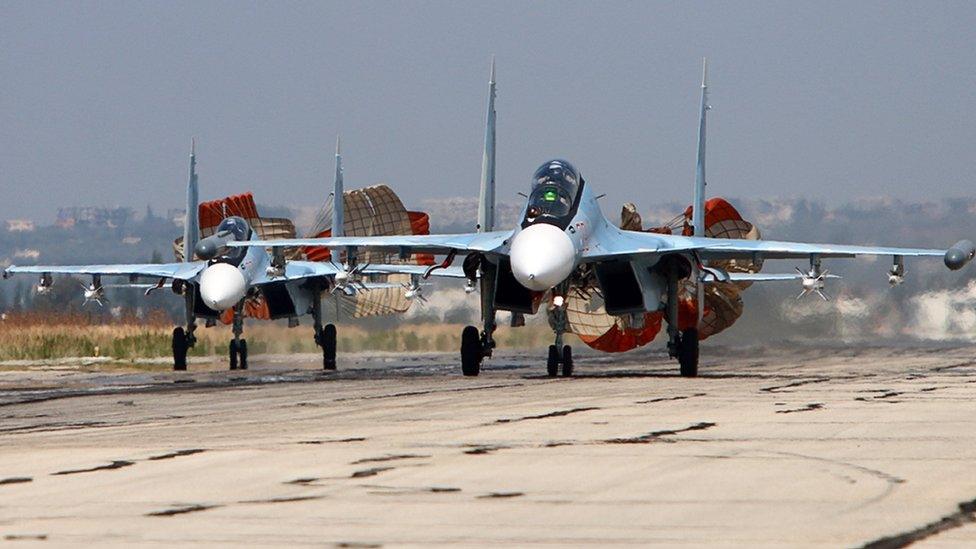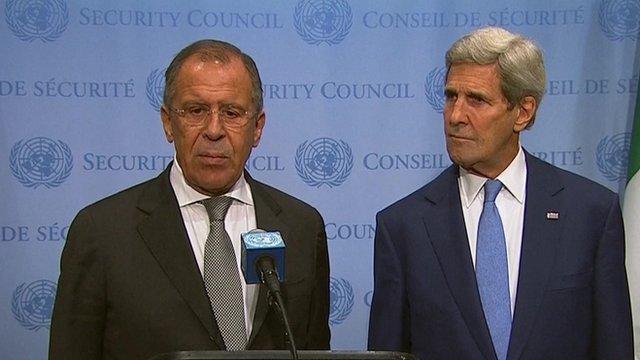Deconflicting conflict: High-stakes gamble over Syria
- Published

A MiG-29 military jet is thought to have locked its radar on to Turkish jets
The two incursions, external into Turkish airspace over the weekend by Russian warplanes highlight the growing risks of Russian, Syrian and Nato aircraft all operating in close proximity.
Nato Secretary General Jens Stoltenberg has made it clear that the Alliance does not place much credence in Russian assertions that these incidents were accidental.
A third incident where what looks to be a Syrian MiG-29 (the Russians have not deployed this aircraft to Syria) actually locked its radar on to Turkish jets only compounds the problem.
This is not an academic concern.
Turkey itself shot down a Syrian jet last year and a helicopter, external only a few months ago. Both had strayed into its airspace.
The Syrians shot down , externala Turkish Phantom jet in June 2012 off their Mediterranean coast; they quickly acknowledged this had been a mistake.
So there is no room for complacency.
So the buzzword of the moment is "deconfliction", external meaning steps to avoid friction between forces operating in the same area.

Deconfliction:
The Oxford English Dictionary defines deconfliction as: The reduction of the risk of collision between (aircraft, airborne weaponry, etc.) in an area by coordinating their movements.

How do you avoid misunderstandings and what procedures do you follow if encounters occur?
Complex problem
When everyone is fighting on the same side the planning process is complex but at least manageable.
US and Allied air operations over Iraq and Syria will be controlled by a detailed daily tasking order establishing targets; the resources to be deployed against each one; the routes to be taken to the target; and similarly the routes for aircraft to return to their bases.
The operations of a range of ancillary aircraft; tankers; intelligence gathering systems; and airborne command-and-control aircraft will all be included in the detailed plan.
But add in another major player who is not exactly an enemy, but is not particularly friendly either and the complexity - but more important the lack of predictability - gets much worse.

Ashton Carter has spoken to his Russian counterpart
The Americans and others were watching Russia's build-up in Syria over the back-end of August and into September.
It appears to have been the Russians who first suggested the idea of talks; a response to Washington's growing worries about what it said was the lack of transparency concerning Moscow's intentions in Syria.
US Defence Secretary Ashton Carter and his Russian counterpart Sergei Shoygu spoke on the telephone, external on 18 September.
(This, of course, was a significant breach in the diplomatic isolation of Russia in the wake of its seizure of the Crimea; a secondary but important consideration in Mr Putin's wider game-plan).
These military-to-military talks moved forward in the wake of the meeting in the margins of the UN General Assembly between President Obama and President Putin.
Very little detail has been revealed in public about what is being discussed.
Secrecy
It is highly unlikely that either side will be willing to reveal its strike plans to the other.
And the whole thing is complicated by the fact that Russia, despite its protestations, is not only hitting so-called Islamic State targets, but is also bombing other groups opposed to President Assad - some of them backed by Washington or its Gulf allies.
What little has been said by US spokesmen about the talks has focused on procedural matters in the event of an encounter, for example the language that should be used in exchanges between pilots and the frequencies to be used.
There are well-established international procedures for such matters - but they don't usually happen over an active war zone.
That is all not to mention Syria's border to the south and Israel's security concerns.
It has reportedly mounted air strikes into southern Syria to attack Hezbollah arms convoys.
Not surprisingly the Israelis and the Russians are having their own "deconfliction" talks, with the Israeli military concerned that nothing should hamper their freedom of operation.
- Published6 October 2015

- Published30 September 2015
